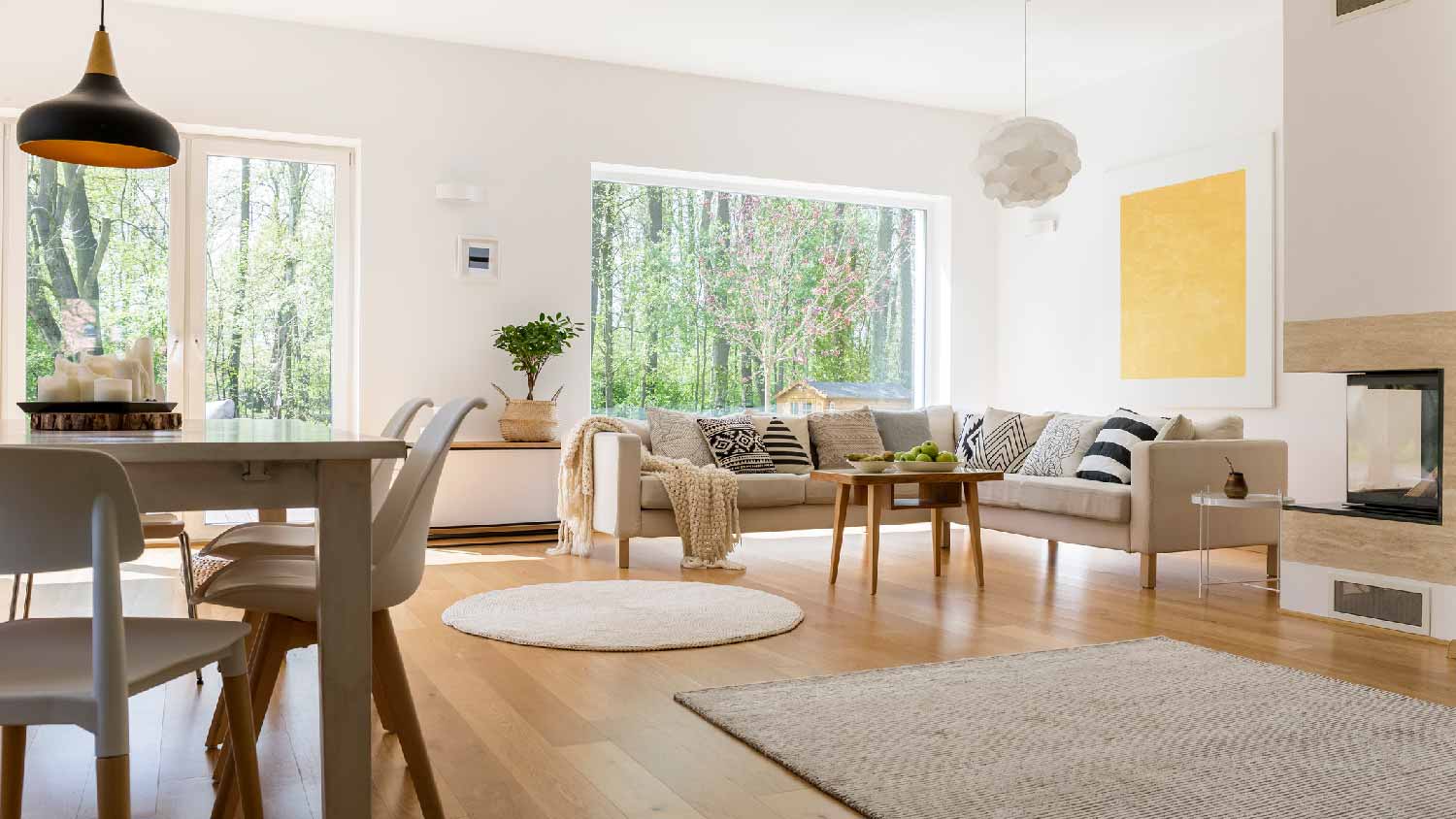
Ozone treatment can help with lingering smoke odors. Learn about ozone smoke removal costs to get an accurate idea of how to budget for this service.
Wet, dry, brown, white, and soft—they’re all rotten


There are five main types of wood rot that can infect your home, and understanding the difference means knowing the severity and whether you need a professional for help. Not only is wood rot unsightly, it can cause serious damage to your home’s wooden structures. Let’s discuss the different types of wood rot, how to identify them, and what causes them.
| Rot | Early identification | Later identification | Common damage | Speed of spread |
|---|---|---|---|---|
| Wet Rot | White strands, moldy odor | White “mushrooms” | Spongy, soft wood | Slow to moderate |
| Dry Rot | White strands, earthy odor | Orange “mushrooms” | Brittle, warped wood | Moderate to aggressive |
| Brown Rot | White strands, earthy odor | Orange “mushrooms” | Brittle, warped wood | Slow to aggressive |
| White Rot | White strands, moldy odor | White “mushrooms” | Spongy, soft wood | Slow to moderate |
| Soft Rot | Saturated wood | White “mushrooms” | Waterlogged, spongy wood | Slow to moderate |

Wet rot is a common type of wood rot that appears on damp wood. Wet rot comes from fungal growth, just like dry rot. Several different types of fungi can cause wet rot. The wet rot fungus attacks the cellulose or lignin in the wood, causing it to become weak and soft. When the wood has a constant moisture content of 30% or more, wet rot could form. It can grow in many different areas, including the following:
Damp basements
Near leaking plumbing
Under floorboards
Around leaky windows and doors
In areas where rainwater collects
Areas in constant shadow that rarely dry out
Wet rot goes through a few different cycles as this type of wood fungus grows.
It starts as hyphae, which are white or brownish strands that resemble spider webs as they grow across the surface of the wood.
As the hyphae grow larger, they look more like white skin over the wood.
Eventually, larger growths appear that resemble off-white-colored mushrooms, called fruiting bodies.
If left unchecked, the fungus can migrate onto damp wood nearby, but it usually won’t travel to non-wood materials.
The wood itself may change color, and you’ll notice that the surface is soft and spongy.
Because wet rot frequently occurs in dark, damp areas, it can be difficult to spot. You may notice a musty or moldy smell near the wet rot before you see it, which is distinct from the earthy, mushroomy odor associated with dry rot.
Wet rot will only occur in your wood structure if the wood is damp and is exposed to the types of fungus that cause this type of wood rot, of which there are many.
Soft rot and white rot are both types of wet rot. The fungi responsible for these issues make the wood soft and pliable, so you can often insert a screwdriver into the wood or use it to peel the damaged wood.
As the wet rot continues unchecked, it breaks down the structural integrity of the wood, eventually causing cracks or total collapse.
The various fungi associated with wet rot don’t cause health problems for most humans who inhale the spores, although some people are sensitive to these spores. However, since wet rot, as the name suggests, thrives in wet or damp conditions, you’ll often find mold growth nearby. Mold spores can make respiratory issues worse and cause allergic reactions like itchy eyes and sneezing.

The most dangerous aspect of wet rot is its ability to spread to weaken structural components in your home and leave you with structural damage. If it weakens a key structural beam, floor joists, roof rafters, or large sections of framing made from wood, it could cause the structure to collapse.
If you notice wet rot, call a local water damage restoration specialist to help remove damaged areas and make repairs.
Like wet rot, dry rot is a type of wood rot that comes from a fungus. While wet rot is a catch-all term for rot caused by a variety of fungi, only one type of fungal spore—Serpula lacrymans—can cause dry rot. Despite the name, dry rot requires some moisture saturation in the wood before it can begin to grow, usually about 20%.
It gets its name, though, from its ability to continue to spread through wood, even after it dries. This runs in contrast to wet rot, which will stop spreading once you dry out the materials.
At first, dry rot looks like furry and white-colored hyphae growth, just like wet rot. You may see a fine brown or orange dust in the area, which indicates spores.
In the next stage, the dry rot growth resembles a mushroom. It often has an orange or red color like you’d see on a piece of rusting metal. If the dry rot occurs in wood with less moisture, the mushroom-like structure may appear light gray or off-white with tinges of yellow or purple instead.
Areas where dry rot frequently appears include the following:
Floorboards
Skirting
Joists
Beams
You may notice an earthy, mushroomy odor in areas where dry rot is occurring as opposed to the moldy odor you’d experience with wet rot.
The fungus associated with dry rot digests the wood, causing it to weaken and suffer visible damage through the breakdown of its cellulose and lignin. When dry rot damages wood, you should notice areas becoming:
Brittle
Darker
Dry
Flaky
Fragile
Warped
If you use the screwdriver test, the screwdriver won’t sink into the wood. Instead, you’ll notice the wood chipping or crumbling away.
Dry rot grows aggressively, making it a more dangerous type of wood rot to experience, and it can also spread to other building materials. It will move to drywall and plaster in search of more food, and it can even set into concrete. It’s also difficult to eradicate without the help of a professional because it continues to grow even if you remove the moisture issue and dry out the area.
Its aggressiveness means you should treat it as soon as you notice it. To repair dry rot, you need to remove the affected wood and replace it, which can get invasive and expensive if it sets into structural components. For dry rot, the best defense is a good offense, and preventing wood rot is your best bet. Keep wood components dry, fix leaks, address water intrusion immediately, and don’t bring infected wood into your home.
The primary danger of dry rot is its ability to weaken structural wood. When beams or posts that are supporting weight have a dry rot infestation, they could fail, causing significant structural damage, even if you treat the underlying moisture issue. As such, dry rot repair costs tend to be higher than the cost of treating other wood rot. Since dry rot often spreads through dry wood, it doesn’t bring the same risk of mold growth into your home as wet rot does, so the effect on you and your family is less severe.
Dry rot fungal spores themselves are not dangerous for most humans exposed to them. However, some people may be sensitive to inhaling the spores.
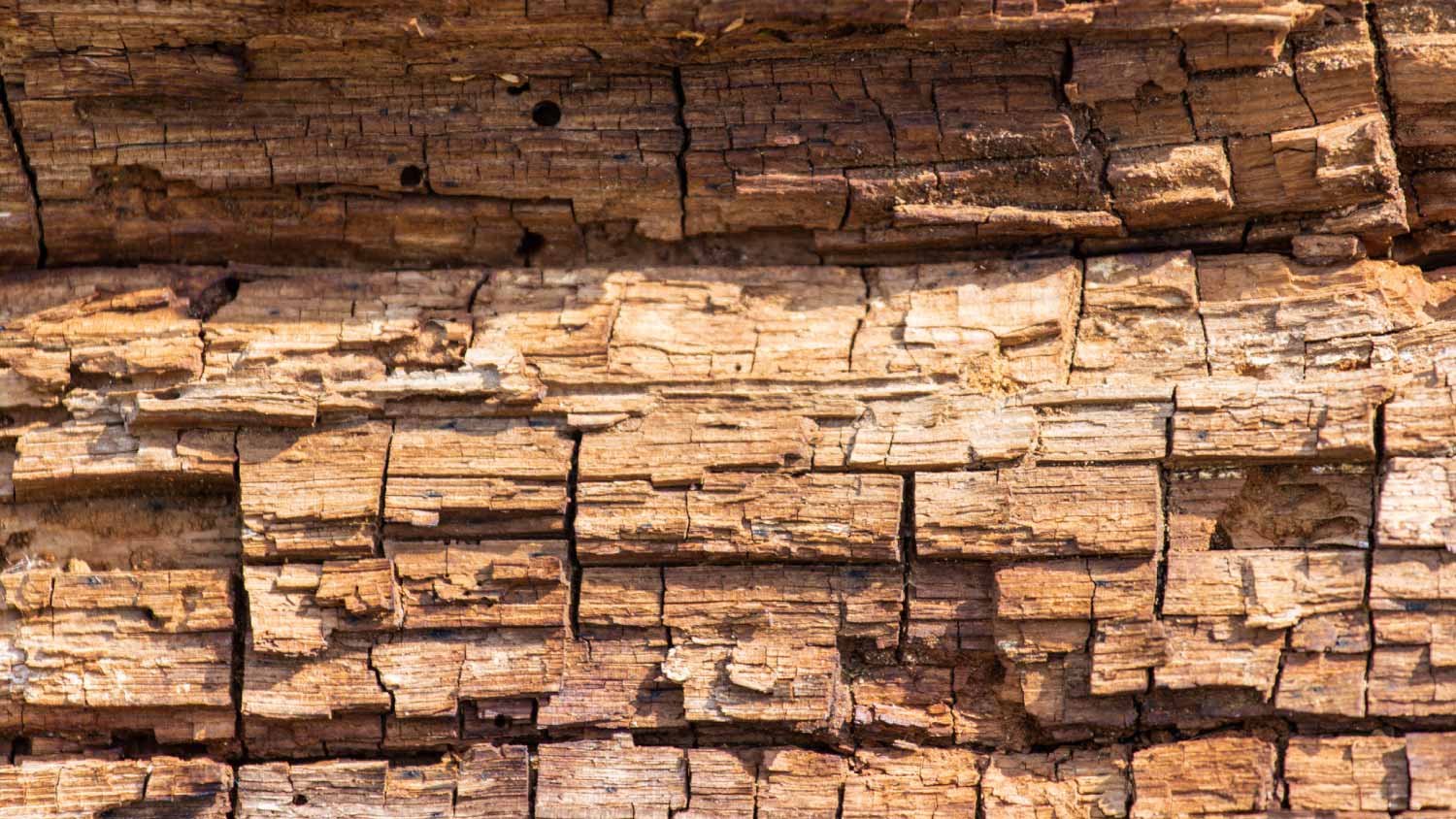
Brown rot is an umbrella term that refers to any fungal infection that leaves a brownish color on the surface of the infected wood. In many cases, brown rot is dry rot that infects moist wood but can continue to spread through dry wood once it sets in.
Like other types of fungal infections, early signs of brown rot include white strands growing on the surface of the wood. You’ll then see brownish fruiting bodies growing. If the brown rot is caused by the fungus that leads to dry rot, you’ll notice that the wood is brittle and crumbly, and you may see cubical cracks forming on the surface as the wood weakens. Some homeowners confuse this water damage for termite damage, but the cracks will be uniform and square.
Regardless of what fungus is causing the brown rot, the wood will weaken and lose its ability to support loads, which is particularly concerning if the issue is with structural components in your home. The wood can crumble away if you don’t remove and replace it quickly, and it may be able to spread to other building materials in your home.
Like dry rot and wet rot, brown rot doesn’t create spores that are particularly dangerous to humans. However, if the brown rot is also considered wet rot, you may experience allergic reactions and respiratory complications if mold also grows where moisture is an issue.
Brown rot can be dangerous, though, if it weakens structural components in your home. Since it can continue to spread through wood and even to other materials after the underlying moisture issue is addressed, it can cause widespread damage in your home and requires immediate help from a professional.
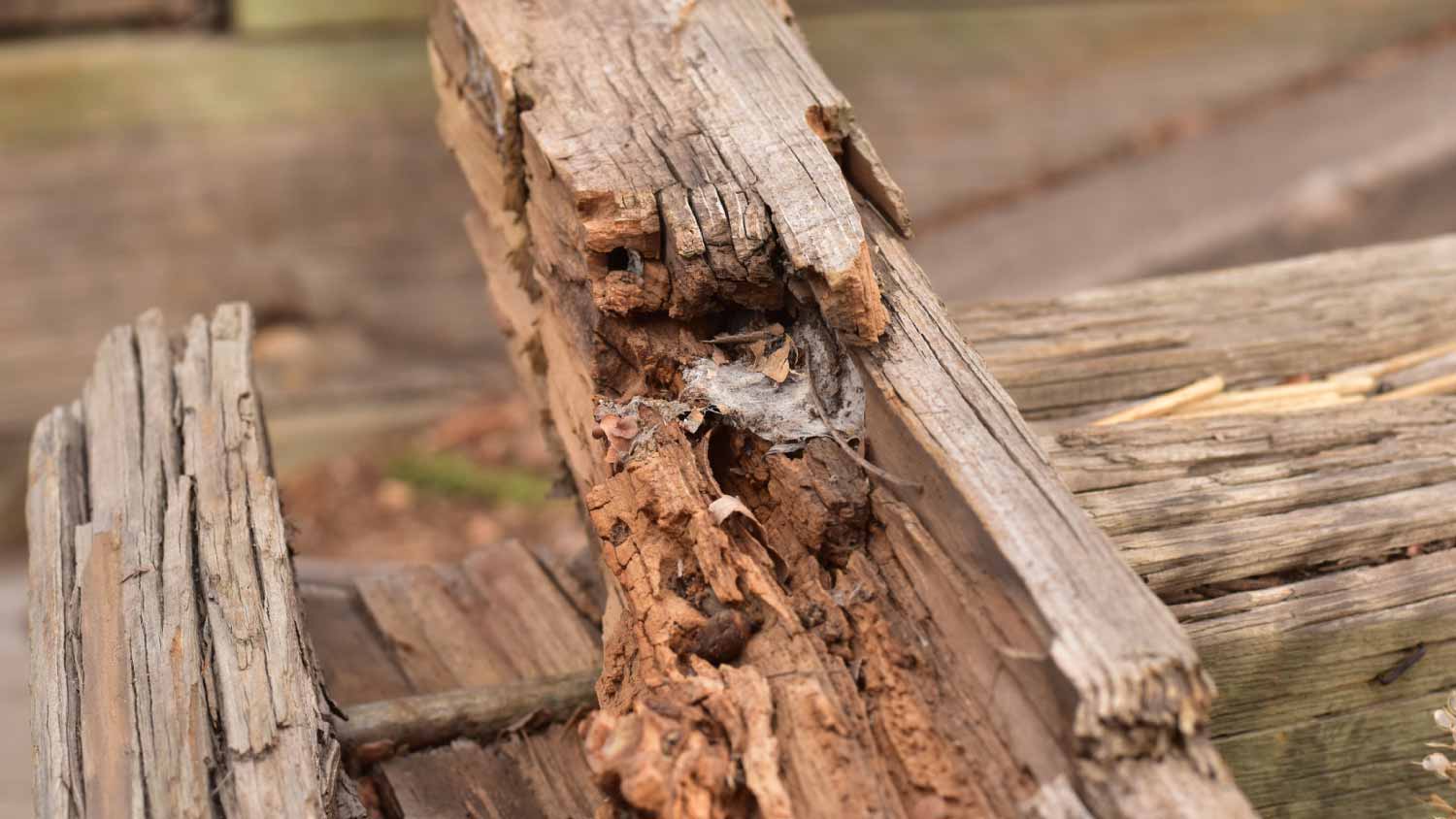
White rot is an umbrella term for any type of wood rot that creates white fruiting bodies on infected wood, which means it’s a form of wet rot. It can infect damp wood with a moisture content of 30% or higher, and it requires that moisture content to persist in order to thrive. If the infected wood dries out, the fungus will die.
White rot first appears as white strands on the surface of the wood that resemble spider webs. As the fungal infection continues to spread, you’ll also start to notice white fruiting bodies or mushrooms on the wood.
Since white rot requires a consistently high moisture content, you’ll often find mold growth alongside it, which creates a moldy, musty odor. You may notice visible mold, too, which looks like fuzzy black splotches on the surface of the wood.
White rot makes your wood soft and pliable, as it’s a form of wet rot. Badly infected wood will become mushy, and you can poke a screwdriver into the surface with relative ease due to the damage.
White rot rarely spreads to other building materials because they won’t hold as much moisture as wooden structural components, but it is possible that you’ll see the infection spreading to drywall.
The fungal spores from white rot itself are unlikely to cause any type of reaction in humans, so it isn’t considered dangerous. However, just like with wet rot, you may experience symptoms from mold growth that accompanies the white rot. Additionally, untreated white rot can cause structural damage in your home, especially if you don’t address the underlying moisture or water problem.
White rot can also destroy wooden structural components in your home, so if you leave white rot to fester, you’ll eventually see major property damage.
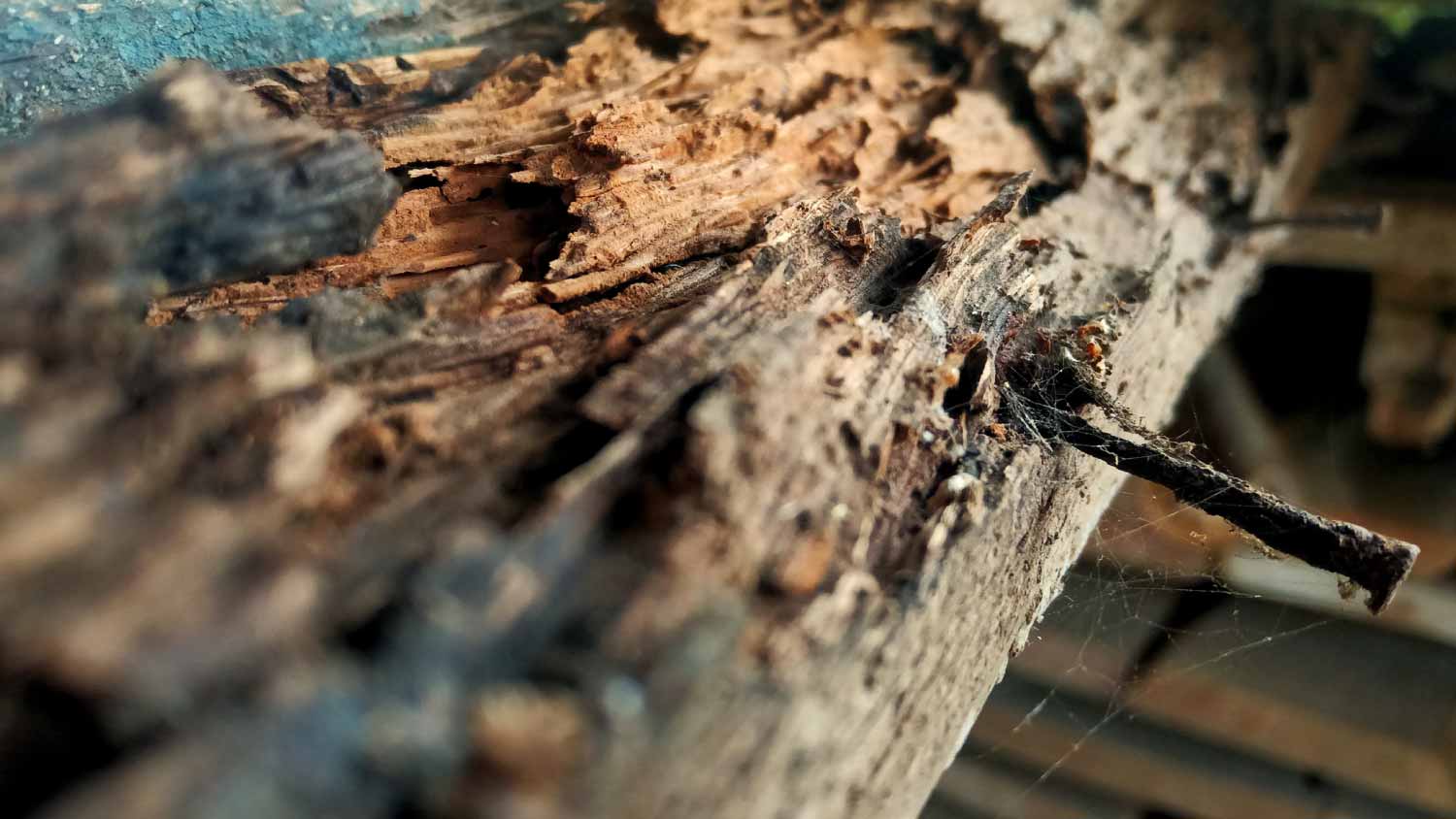
Soft rot is another umbrella term that covers damage linked to many different species of fungi. It’s a form of wet rot that sets in when wood remains highly saturated, so it more often occurs in outdoor wood than on indoor lumber exposed to moisture from leaks or water intrusion.
Soft rot is wet rot, so you’ll notice the same symptoms when it occurs. These include a white, web-like covering on the affected wood at the start of the infection, followed by white fruiting bodies forming in extreme conditions.
Wood affected by soft rot will often be darker because of the saturation, and you’ll notice fibrous damage or soft wood that you can puncture or depress with your finger or a screwdriver.
You’ll also almost always notice a strong, moldy odor, as the high moisture content associated with soft rot means the area is also a breeding ground for mold. You may notice visible mold, too, which looks like fuzzy brown or green growth on the wood.
Soft rot destroys the structural components of wood, including cellulose and lignin, so it gradually creates structural weaknesses. Of course, this is most concerning if the soft rot occurs on main structural components, like beams, floor joists, or roof rafters.
The mold growth that normally accompanies soft rot can also damage the wood, so the damage may progress more quickly than it would with other types of wet rot.
Soft rot itself isn’t directly dangerous to humans, but it’s more concerning than other types of wet rot. Soft rot requires a high moisture concentration, which means mold growth is more likely. Mold spores can be dangerous to inhale and can cause allergy symptoms and respiratory complications. Soft rot can also set in more quickly than general wet rot and progress more rapidly, so it sits between wet rot and dry rot in terms of the danger level.
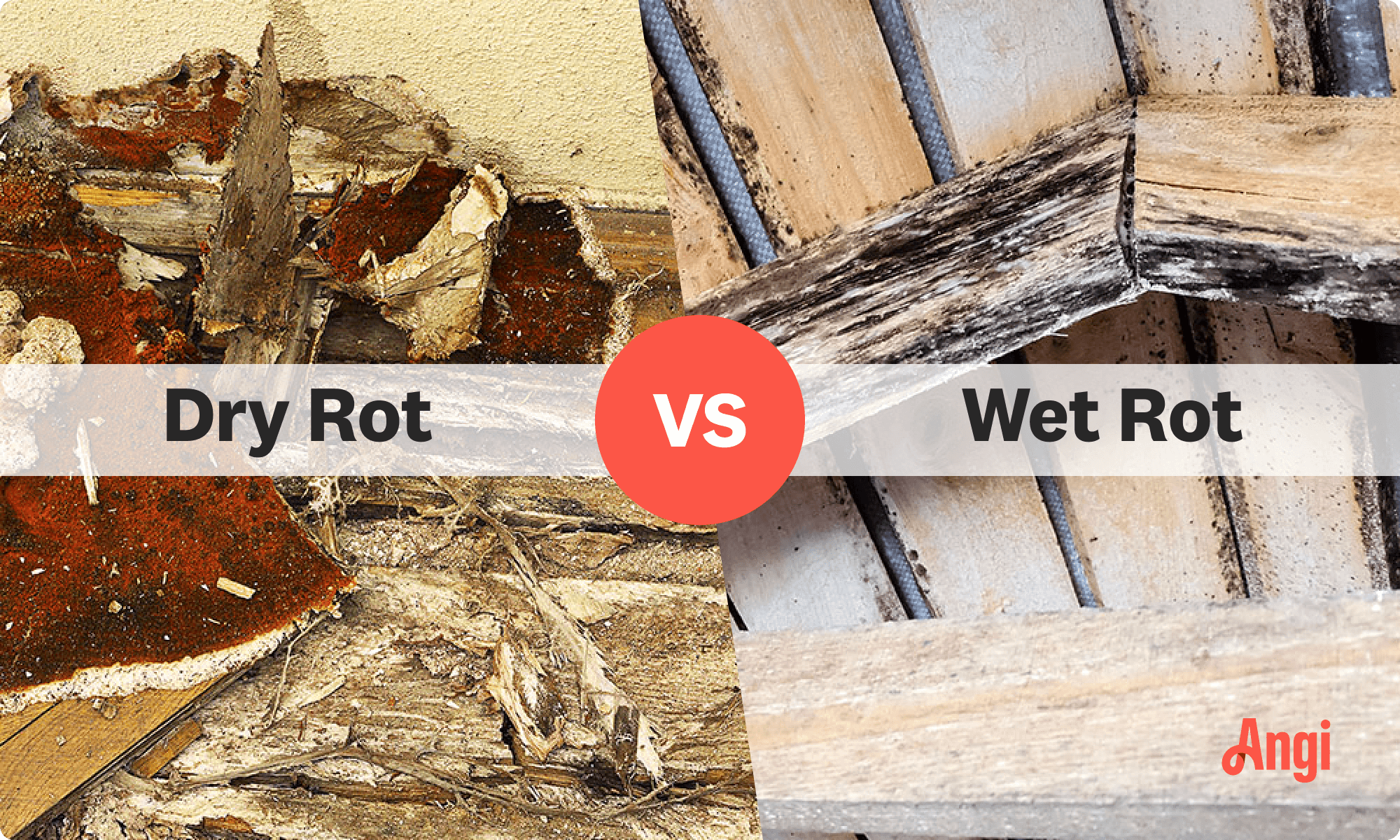
Understanding the primary differences between the different types of wood rot can help you identify the issue quickly and get the necessary repairs underway immediately, mitigating the damage.
You’re likely dealing with dry rot or brown rot if you notice the following:
A mushroomy or earthy odor
Wood that doesn’t appear wet
A brownish color to the spores or mushrooms on your wood
Crumbly or brittle wood
Cubicle cracks on the surface of the wood
The following signs are more in line with wet rot, white rot, and soft rot:
A musty, moldy odor
Visible mold growth near the wood rot
Wood that looks or feels saturated
A whitish color to the spores or mushrooms on your wood
Soft, mushy, pliable wood
Though the terms are used interchangeably, wood rot and dry rot have different meanings. Wood root is a broad term that describes various types of fungal decay in wood, while dry rot is a specific type of wood rot caused by the fungus Serpula lacrymans. Dry rot can thrive at a low moisture level and spread rapidly across plaster and even masonry to infect new areas of wood.
If you can easily identify that you’re dealing with wet rot, your best course of action is to fix the underlying moisture issue, dry out the area, and replace any severely damaged wood. This could potentially be DIYable, depending on where the water is coming from. If you can’t find the source or it’s stemming from a major issue, like water intrusion through your basement walls, call a professional basement waterproofing company to handle the underlying problem.
Once you stop the source of the moisture, you can run blower fans for 24 to 72 hours to dry out the remaining moisture. At that point, wet rot will stop spreading, and you can replace any wood that suffered severe damage or call a local handyman service to tackle the job for you. If the components are structural, call a water damage mitigation professional immediately.
If you suspect you have dry rot or can’t tell for sure which type of wood rot you have, call a water damage restoration company near you right away to take a look and come up with an appropriate plan of action.
Billy did such a fantastic job repairing damage done by a washer/dryer installation. You can't even tell where the damage was done now! He was delightful to work with, so professional and kind.
Kurtis from Bend Home Management Solutions was GREAT to work with! He was professional, punctual, responsive to questions, and did excellent quality work. I recommend him without reservation and hope to have the opportunity to work with him again in the future.
Can’t say enough about the service I received. My garage door springs broke late yesterday afternoon with cars inside. I started calling places for help and two places told me it would be two or three weeks for service! I called Cascade and was told they could fix it today. The gentleman...
Larrabie was fantastic. Quick bid and added me to their busy schedule right away. They showed up on-time and were extremely professional. Their work was exceptional and even came in under the estimate. I would hire Larrabie again without hesitation and will continue to recommend their...
From average costs to expert advice, get all the answers you need to get your job done.

Ozone treatment can help with lingering smoke odors. Learn about ozone smoke removal costs to get an accurate idea of how to budget for this service.

Your dry rot repair cost will depend on factors such as the extent and size of the damage and its location within your home. Here's what you need to know.

Fire damage restoration costs vary widely based on the extent of the damage. Learn how to assess your home and estimate your total after a fire.

Follow this simple guide to fix water-damaged wood furniture. You don’t always have to buy new ones.
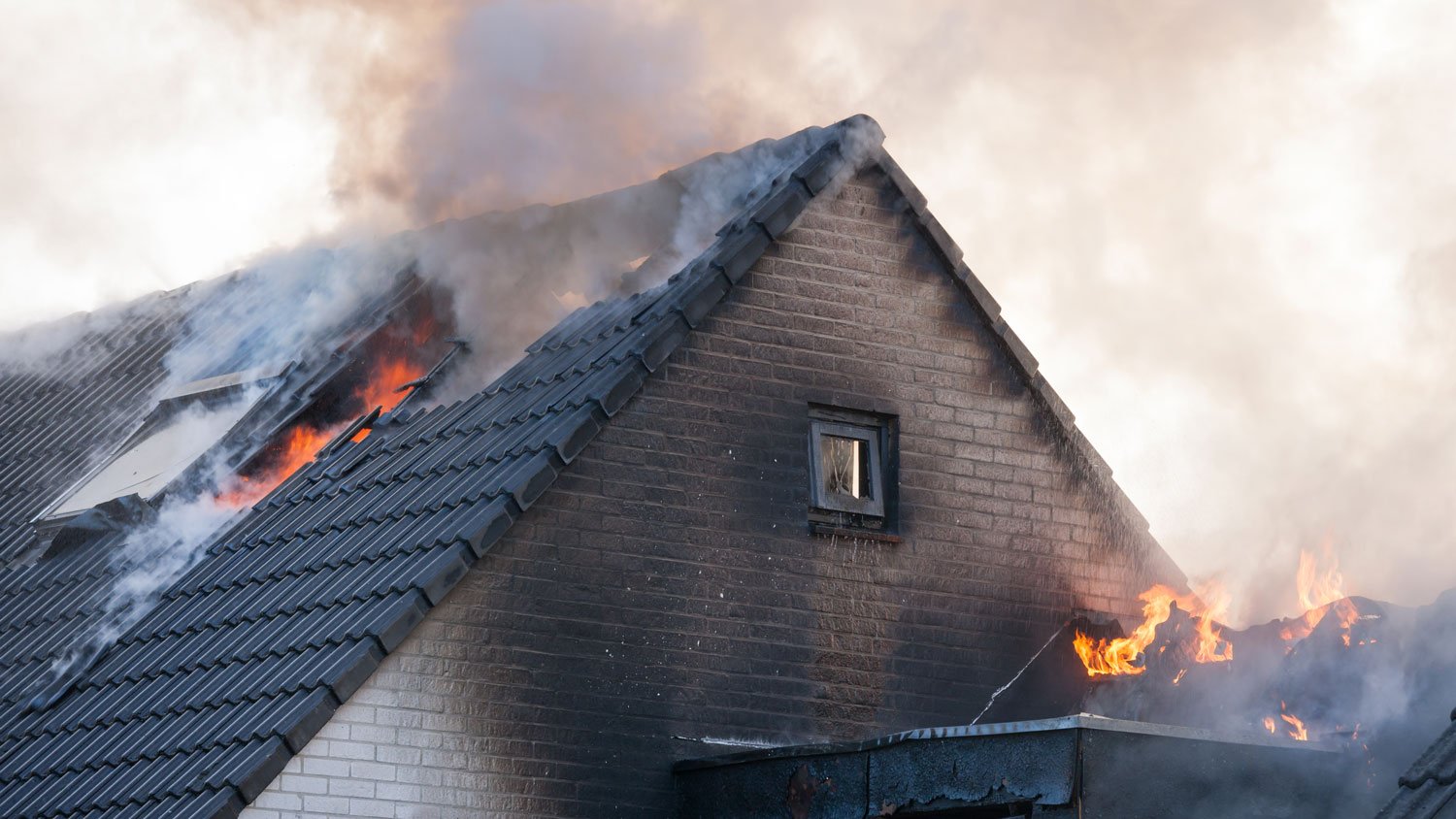
A house fire can leave behind several types of damage. Our guide explains the difference between fire damage and smoke damage and how to recover from each.

If water destroys your home, don’t let it destroy your wallet, too. Use these water damage insurance claim tips to help get quick approval for repairs.